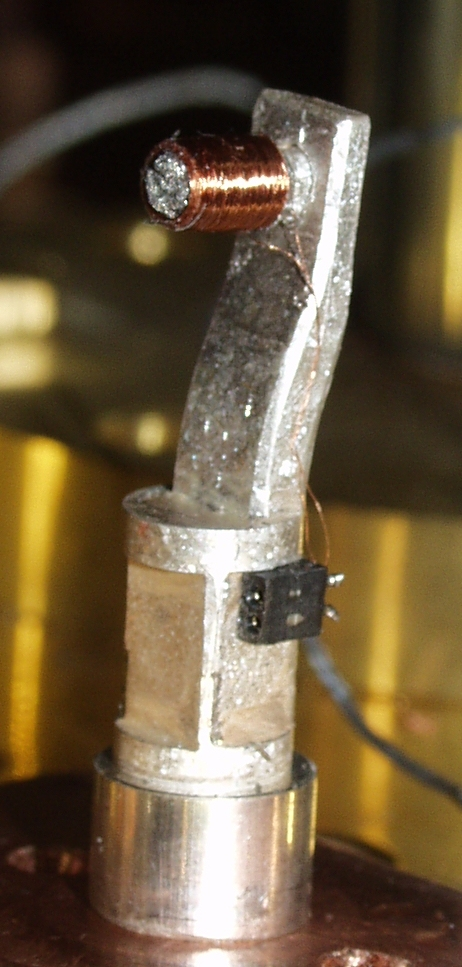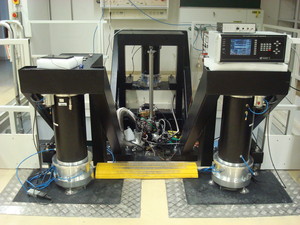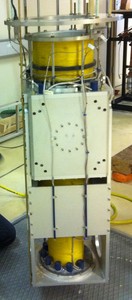DRS 1000
A powerful dilution unit allows us to cool the mixing chamber down to 3 mK and to precool a massive copper nuclear stage (~90 mol) in a field of 9 T in 100 h to 8 mK. After demagnetization the lowest temperature of the copper stage, measured by a Pt thermometer, was 50.9 µK in a field of 20 mT. The cryostat is integrated with an 8 T - 4 T vector magnet system. Furthermore it is equipped with several semi-rigid coaxial lines (SC-219/50-C-TU-L) to the still plate, extending to the mixing chamber with semi-rigid superconducting coaxial lines (SC-160/50-NbTi-NbTi) for microwave frequencies up to 65 GHz. The refrigerator is provided with a 50 mm central clear shot tube allowing the insertion of a top-loading probe to carry out measurements inside the vector magnet bore in a reasonably short time of about 4 hours. The system will mainly be used to study quantum critical behavior of heavy fermion compounds. Of course, we are open to collaborations on other exciting topics!
Dilution refrigerator unit
Heat exchangers: The silver sinter heat exchangers have been designed using the method described by Frossati et al. (Proc. Hakone Int. Symp. The Physical Society of Japan 205, 1977). The total amount of silver used is ~1.6 kg with a surface area of 1000 (1300) m2 at the concentrated (diluted) side.
Mixing chamber: At the bottom of the large mixing chamber a plate with 180 mm diameter is attached, to provide enough space for different experiments.
The system has a large cooling power. Without a magnetic field, the copper nuclear stage reaches the base temperature of the mixing chamber of 3 mK.
The top load probe allows to carry out measurements inside the vector magnet bore, with short sample exchange times of about 4 hours.
 |
 |
How to measure temperature?
|
 |
Active damping system
|
|
 |
Magnet system
|
More details can be found in
"The Vienna Nuclear Demagnetization Refrigerator",
D. H. Nguyen, A. Sidorenko, M. Müller, S. Paschen, A. Waard, and G. Frossati,
J. Phys.: Conf. Ser. 400, 052024 (2012).
Read more
Superconductivity in an extreme strange metal,
D. H. Nguyen, A. Sidorenko, M. Taupin, G. Knebel, G. Lapertot, E. Schuberth, and S. Paschen,
Nat. Commun. 12, 4341 (2021),
DOI:10.1038/s41467-021-24670-z, arXiv:2106.14849v1.


